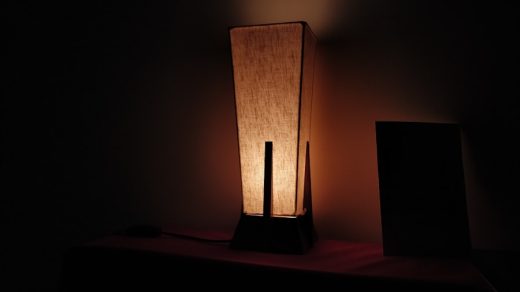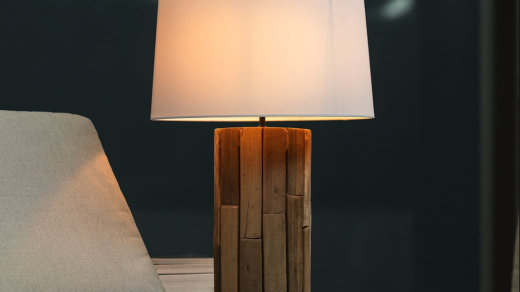Lighting is a crucial element in kitchen design, serving both functional and aesthetic purposes. Adequate illumination is essential for creating a safe and efficient cooking environment, enhancing visibility for food preparation and utensil handling. Proper lighting also contributes significantly to the kitchen’s atmosphere, allowing for versatility in mood setting from bright, energizing light for morning activities to softer, more intimate lighting for evening gatherings.
Strategically placed lighting Casalucelighting can accentuate design features such as cabinetry, countertops, and backsplashes, adding depth and dimension to the space. It can create focal points and highlight specific areas, enhancing the kitchen’s overall visual appeal. Table lamps, in particular, can be valuable additions to kitchen lighting schemes, offering both functional illumination and decorative elements.
When carefully selected and positioned, table lamps can elevate the kitchen’s style and functionality, transforming it into a more inviting space for cooking, dining, and entertaining.
Choosing the Right Table Lamp for Your Kitchen
Size and Scale
The size and scale of the lamp in relation to the space where it will be placed is crucial. A large, statement-making lamp may be suitable for a spacious kitchen island or dining table, while a smaller, more understated lamp may be better suited for a countertop or shelf.
Style and Aesthetic
The style and aesthetic of your kitchen should also influence your lamp choice. With a wide range of designs and finishes available, you can find a table lamp that suits your kitchen’s modern, minimalist look or traditional, rustic feel.
Functionality and Practicality
When it comes to functionality, consider the lamp’s purpose and the type of light it provides. For task lighting, a lamp with a focused beam and adjustable brightness may be ideal, while a lamp with a softer, diffused glow may be more suitable for ambient lighting. Additionally, opt for lamps with easy-to-clean surfaces and long-lasting LED bulbs to minimize maintenance and energy costs in the long run.
Placement and Positioning of Table Lamps in the Kitchen
The placement and positioning of table lamps in the kitchen can have a significant impact on both their functionality and visual appeal. When determining where to place a table lamp, consider the specific areas in the kitchen that could benefit from additional lighting. For example, placing a lamp on a kitchen island or countertop can provide focused task lighting for food preparation, while placing lamps on dining tables or breakfast nooks can create a warm and inviting atmosphere for meals and gatherings.
Additionally, consider the height at which the lamp will be positioned to ensure that it effectively illuminates the intended area without obstructing sightlines or interfering with other activities in the kitchen. In terms of positioning, consider the angle at which the light will be directed to achieve the desired effect. For task lighting, such as reading recipes or chopping vegetables, positioning the lamp at an angle that minimizes glare and shadows is essential for optimal visibility.
On the other hand, for ambient lighting, such as creating a cozy atmosphere for dining or entertaining, positioning the lamp at a height that allows the light to spread evenly across the space can help to achieve a more inviting and comfortable environment. By carefully considering the placement and positioning of table lamps in your kitchen, you can maximize their functionality and aesthetic impact, enhancing both the practicality and visual appeal of the space.
How Table Lamps Can Enhance the Aesthetics of Your Kitchen
Table lamps can play a significant role in enhancing the aesthetics of your kitchen by adding an element of style, warmth, and personality to the space. With their wide range of designs, shapes, sizes, and finishes, table lamps can serve as decorative accents that complement and elevate the overall look of your kitchen. Whether you’re looking to add a touch of elegance with a sleek and modern lamp or infuse a sense of charm with a vintage-inspired design, there are table lamps available to suit every style and preference.
Additionally, table lamps can also serve as focal points or conversation starters in the kitchen, drawing attention to specific areas or features and creating visual interest. Furthermore, table lamps can contribute to creating a layered lighting scheme in the kitchen, adding depth and dimension to the overall ambiance. By combining different types of lighting, such as overhead fixtures, under-cabinet lights, and table lamps, you can create a more dynamic and visually appealing environment.
Table lamps can also help to soften harsh overhead lighting and create a more inviting atmosphere for dining and entertaining. With their warm and diffused glow, table lamps can add a cozy and intimate feel to the kitchen, making it a more comfortable and enjoyable space for everyday activities.
Practical Benefits of Using Table Lamps in the Kitchen
In addition to their aesthetic appeal, table lamps also offer several practical benefits that make them valuable additions to the kitchen. One of the primary advantages of using table lamps is their versatility in providing both task lighting and ambient lighting. Whether you need focused illumination for food preparation or softer light for dining and socializing, table lamps can be easily adjusted to meet your specific lighting needs.
This flexibility allows you to create different moods and atmospheres in the kitchen, making it a more functional and adaptable space for various activities throughout the day. Furthermore, table lamps can also serve as portable light sources that can be easily moved to different areas of the kitchen as needed. This mobility makes them particularly useful for illuminating specific work areas or creating temporary lighting arrangements for special occasions or events.
Additionally, table lamps can also serve as backup lighting during power outages or emergencies, providing a reliable source of illumination when other lighting fixtures may not be available. With their practical versatility and functionality, table lamps offer an effective and convenient lighting solution for various needs in the kitchen.
Incorporating Table Lamps into Different Kitchen Styles
Modern Kitchens
In modern kitchens with sleek lines and minimalist designs, table lamps with clean and simple silhouettes can complement the contemporary aesthetic while adding a touch of warmth and softness to the space.
Traditional and Rustic Kitchens
On the other hand, in traditional kitchens with classic details and ornate features, table lamps with decorative bases and intricate shades can contribute to the overall charm and elegance of the room. Similarly, in rustic or farmhouse-style kitchens with natural materials and cozy textures, table lamps with weathered finishes and organic elements can help to create a warm and inviting atmosphere.
Adding Personality and Defining Spaces
Table lamps can also be used to add pops of color or pattern to neutral or monochromatic kitchens, serving as accent pieces that inject personality and visual interest into the space. Furthermore, in open-concept kitchens that are integrated with living or dining areas, table lamps can help to define specific zones within the space while adding decorative flair.
Maintenance and Care for Kitchen Table Lamps
To ensure that your kitchen table lamps continue to function effectively and look their best, it’s important to provide regular maintenance and care. One of the most basic maintenance tasks is keeping the lamps clean by dusting or wiping them down regularly with a soft cloth. This helps to prevent dust buildup on the surfaces of the lamps and maintain their appearance over time.
Additionally, if your table lamps have fabric shades, it’s important to vacuum or gently brush them to remove any accumulated dust or debris. Furthermore, it’s essential to check and replace bulbs as needed to ensure that your table lamps provide optimal illumination. Over time, bulbs may dim or burn out, so it’s important to monitor their performance and replace them promptly when necessary.
Additionally, consider using energy-efficient LED bulbs in your table lamps to minimize energy consumption and reduce maintenance needs in the long run. In terms of care, it’s important to handle table lamps with care when moving or adjusting them to avoid damage or breakage. Be mindful of any delicate components or materials on the lamps and take precautions to prevent accidents or mishaps.
If your table lamps have adjustable parts or mechanisms, such as swivel arms or adjustable shades, make sure to use them gently and avoid applying excessive force that could cause damage. In conclusion, table lamps can be valuable additions to the kitchen, providing both functional illumination and decorative flair. By carefully selecting and positioning table lamps in your kitchen, you can enhance its aesthetics while also enjoying practical benefits such as versatile lighting options and portable light sources.
With proper maintenance and care, your kitchen table lamps can continue to enhance the functionality and visual appeal of your space for years to come.




